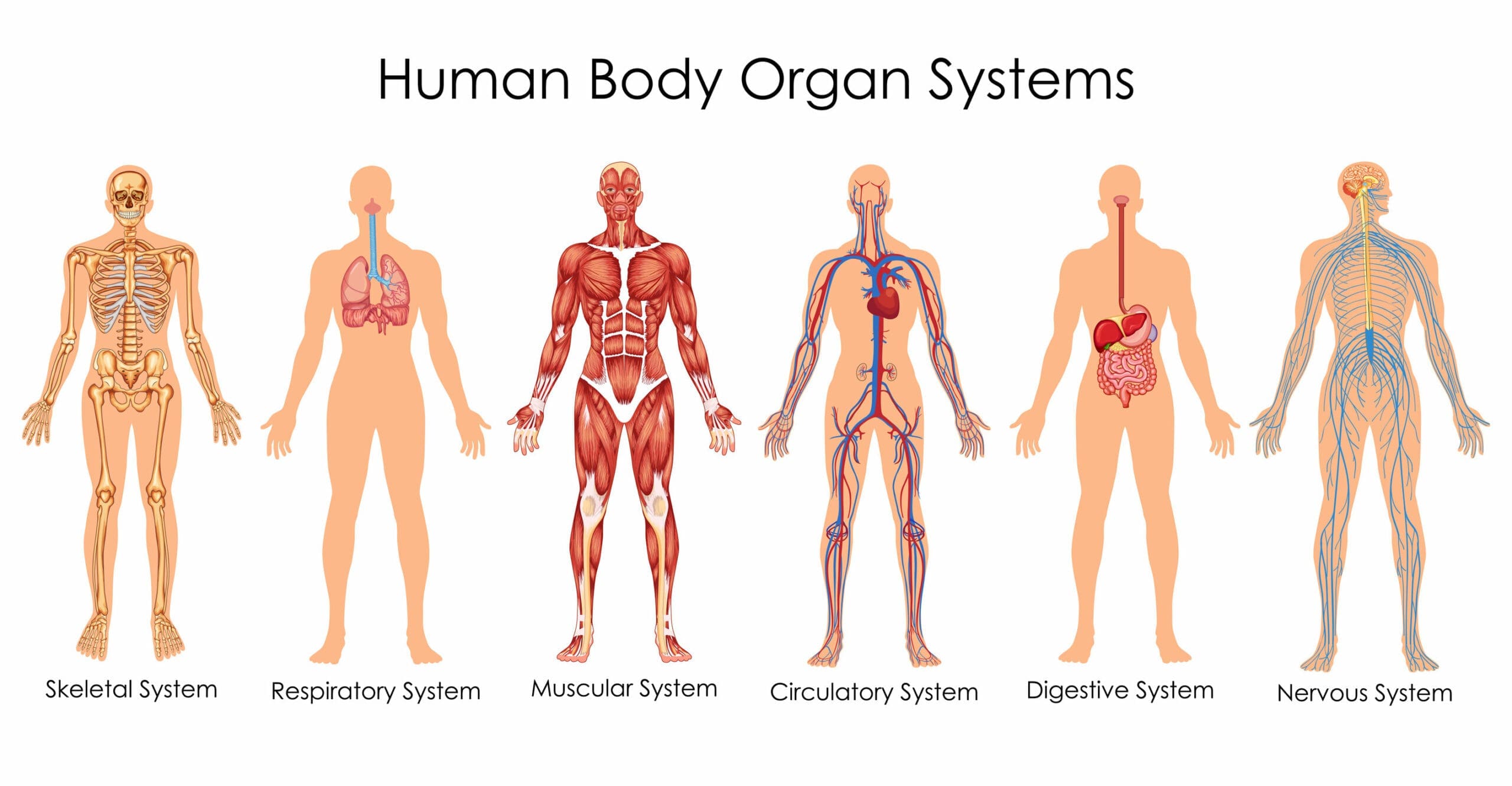In this post
There are 11 major organ systems in the human body. These are:
- The circulatory system
- The respiratory system
- The digestive system
- The excretory system
- The nervous system
- The endocrine system
- The immune/lymphatic system
- The skeletal system
- The muscular system
- The integumentary system
- The reproductive system
We will look at these systems in detail over the duration of the course; however, we are going to briefly go over their structures and functions now.
The circulatory system
The circulatory system, also known as the cardiovascular system, permits blood to circulate around the body so that it can provide cells with essential nutrients, help protect the body from disease and to also allow for the process of gas exchange. The circulatory system goes around the whole human body. The following diagram illustrates the blood flow in the human circulatory system:
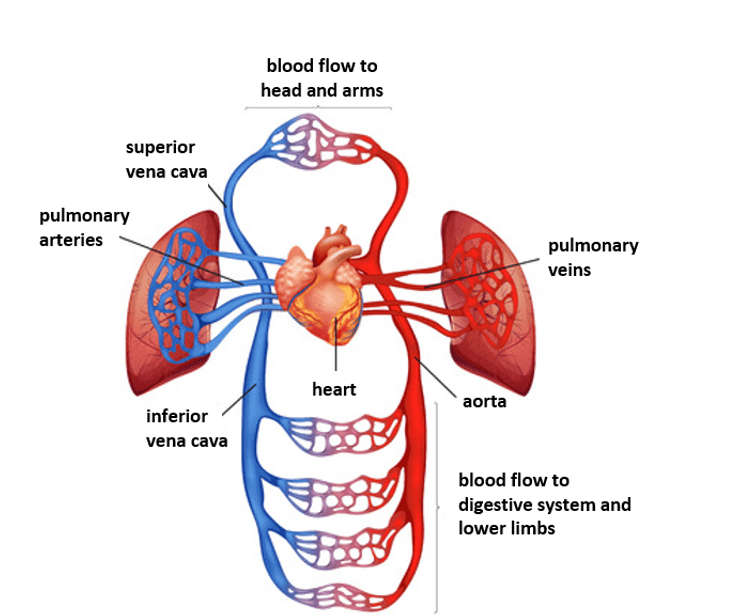
The respiratory system
The respiratory system refers to a series of organs involved in taking oxygen into the body and releasing carbon dioxide. The primary elements of the respiratory system are:
- The nasal cavity
- The oral cavity
- The pharynx
- The epiglottis
- The larynx
- The trachea
- The pleura
- The bronchus
- The bronchioles
- The alveoli
- The lungs
- The diaphragm
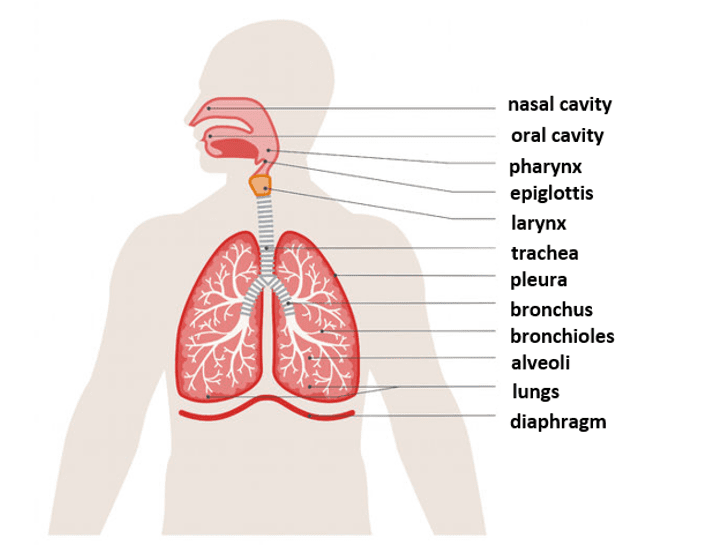
The digestive system
The digestive system refers to a series of organs involved in converting food into energy and nutrients that the body requires. Food enters the mouth and passes through a large tube-like structure known as the alimentary canal (also known as the gastrointestinal tract). The alimentary canal is made up of the mouth, pharynx, oesophagus, stomach, small intestine, large intestine and the rectum.
Other organs not making up the alimentary canal are involved in the digestive system; these are known as accessory digestive organs and include the pancreas, liver and the gallbladder.
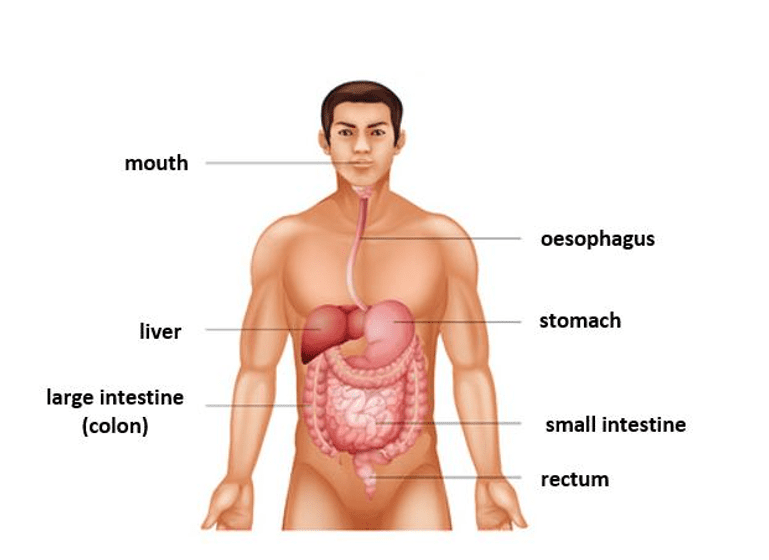
The excretory system
The excretory system, also known as the urinary system, refers to a series of organs involved in discharging excess wastes from the body. It does this to help maintain an internal chemical balance (homeostasis), helping to prevent any damage to the body.
The primary excretory system organs are:
- The kidneys
- The skin
- The liver
The accessory excretory system organs are:
- The liver
- The gallbladder
- The urinary bladder
- The ureters
- The urethra
- The large intestine
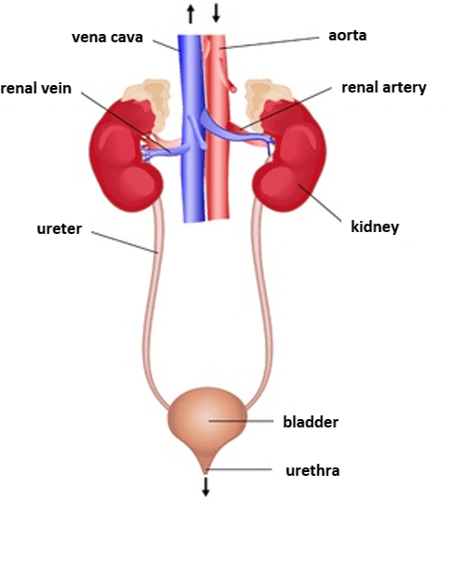
The nervous system
The nervous system is made up of a complex network of nerves and cells that are responsible for carrying messages to and from the brain and spinal cord to the rest of the body. The nervous system can be classified into two parts: the central nervous system (CNS) and the peripheral nervous system.
The central nervous system refers to the brain and spinal cord. The peripheral nervous system refers to the nerve cells that carry information to and from the central nervous system.
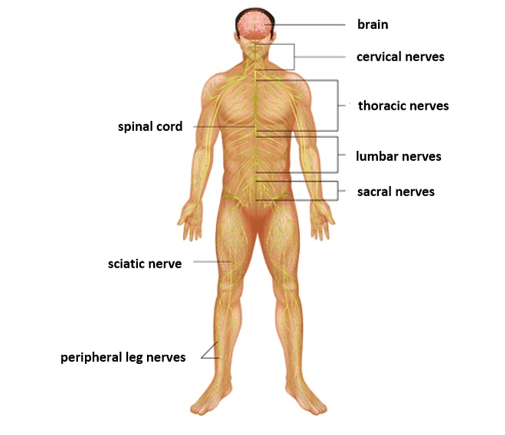
The endocrine system
The endocrine system refers to the glands in the body that secrete hormones. Hormones are chemical substances that are responsible for regulating the activity of cells and organs; they help to regulate growth, and development, metabolism, tissue function, sexual function, reproduction, mood, sleep and many other factors.
The main glands that make up the endocrine system are:
- The hypothalamus
- The pituitary gland
- The pineal gland
- The thyroid and parathyroid glands
- The thymus
- The pancreas
- The adrenal glands
- The ovaries (in females)
- The testicles (in males)
- The placenta (in females during pregnancy)
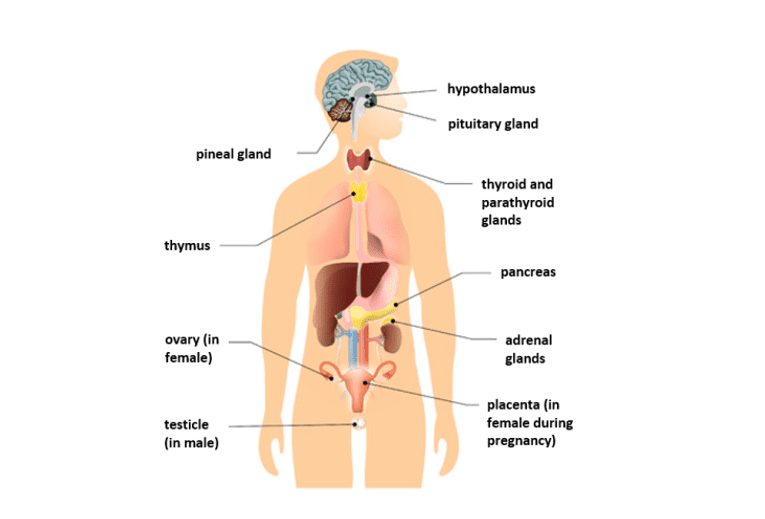
The immune/lymphatic system
The lymphatic system is a network of various tissues and organs that help the body to dispose of toxins, waste and other unwanted materials. Lymph is a fluid containing infection-fighting white blood cells; the lymphatic system’s primary function is to transport lymph around the body to help keep it protected (we will discuss the lymphatic system in detail in a later topic).
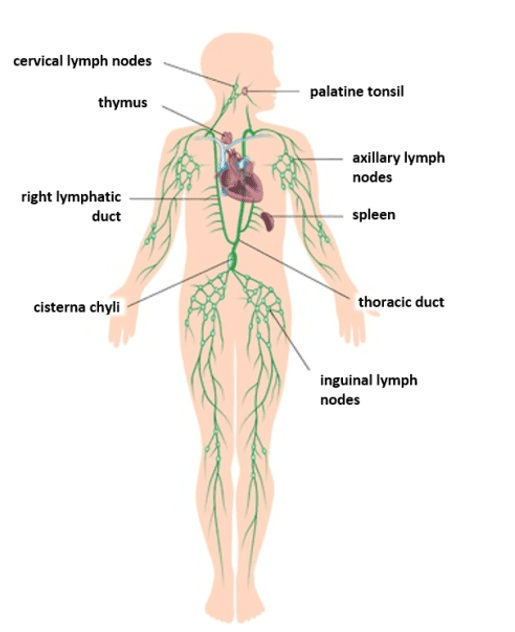
The skeletal system
The skeletal system refers to the bones in the human body. The adult human skeletal system consists of 206 bones in total. These bones are connected by a network of tendons, ligaments and cartilage. The skeletal system has many vital functions which include movement, support, protection, endocrine regulation, calcium storage and blood cell production.
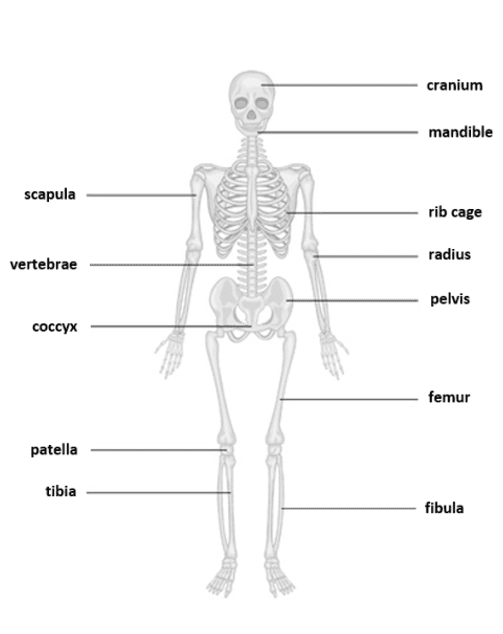
The muscular system
The muscular system consists of skeletal, smooth and cardiac muscles. Muscles allow for the movement of the human body, the maintenance of posture and also for the circulation of blood throughout the body.
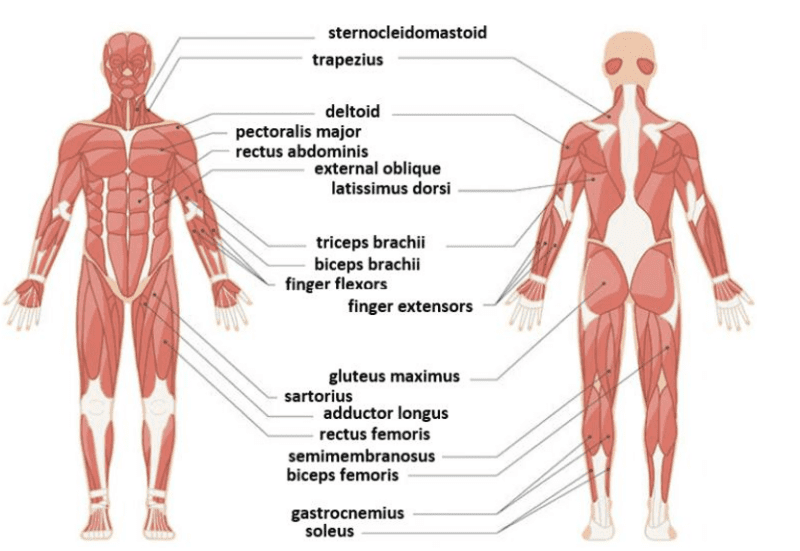
The integumentary system
The integumentary system consists of the skin, hair, nails and exocrine glands. The skin is the largest organ in the body, even though it is only a few millimetres thick. The skin works with the immune system as it is the body’s first defence mechanism against disease and infection and protection of the vital organs and systems. Look at the following diagram which illustrates the structure of the skin:
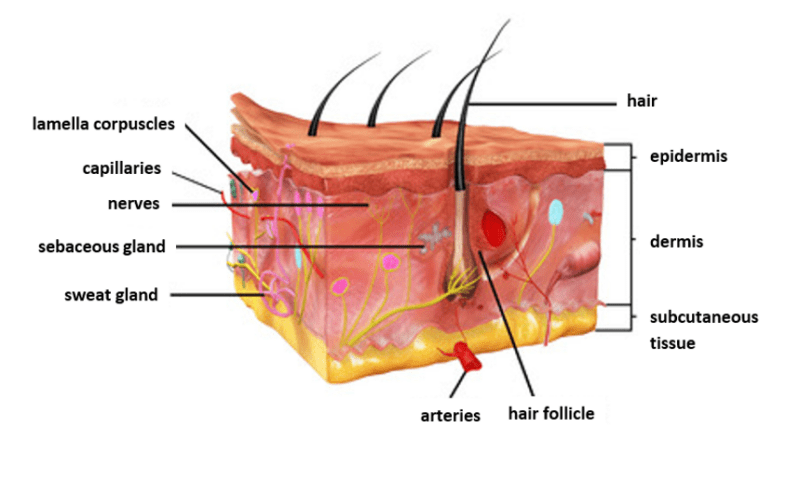
The reproductive system
The reproductive system is a system of internal and external sex organs within an organism. These sex organs work together for the purpose of sexual reproduction. In humans, the reproductive system has several accessory glands and organs. The male and the female reproductive systems are very different; we are now going to look at their individual structures.
The male reproductive system is made up of:
- Testes (sing. testis)
- Penis
- Urethra
- Glands
- Sperm ducts
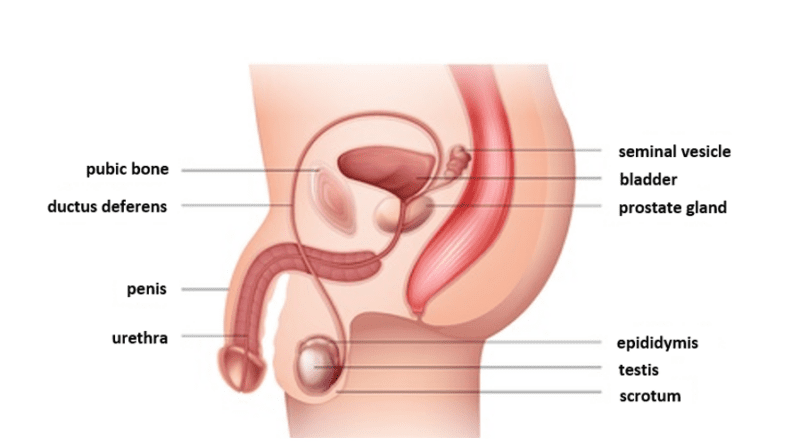
The female reproductive system is made up of:
- Vagina
- Cervix
- Uterus
- Egg tubes
- Ovaries


